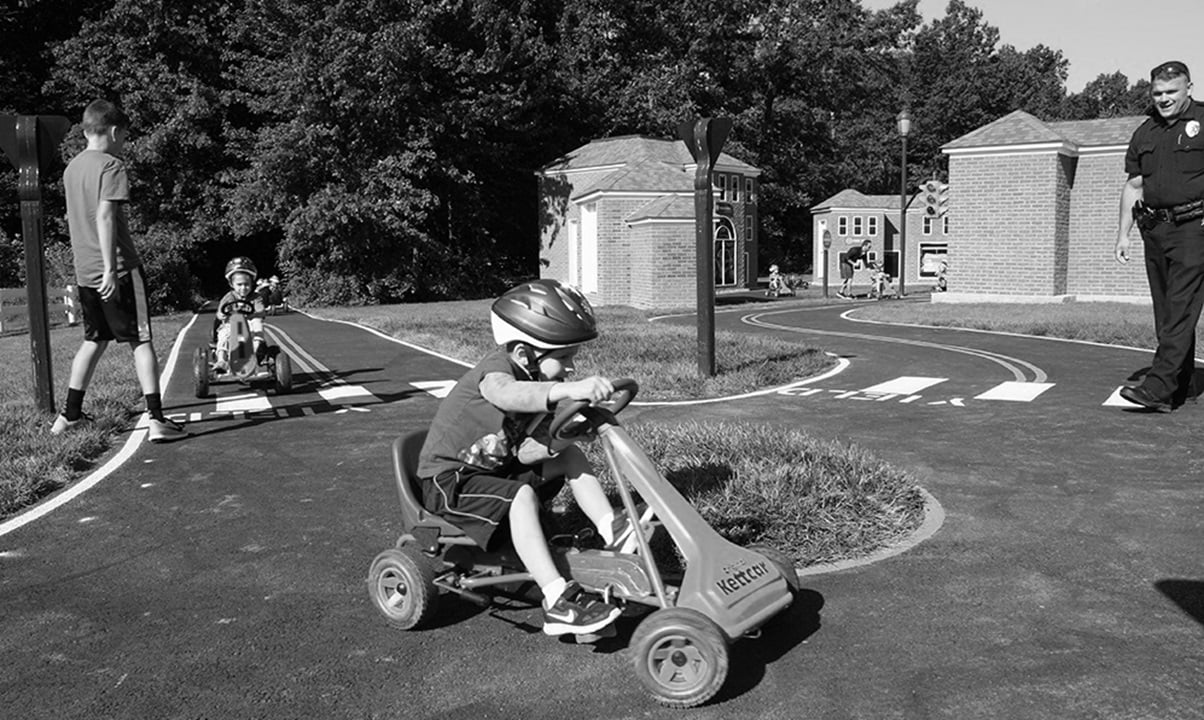As on-board vehicle control systems continue to advance, the behind-the-scenes validation strategies required to develop them must advance as well. New innovations in connectivity and automation require that OEMs and Tier-1s devise new test methods to verify proposed systems for both function and safety.
Not surprisingly, a number of new test facilities that go beyond traditional vehicle proving grounds are springing up around the globe. These new facilities are not unlike the “safety towns” where children are taught the rules of the road by peddling carts around miniature villages under the watchful eye of teachers and volunteer policemen. However, these new facilities are strictly for grown-ups. They’re meant to serve as the training arenas for the ‘electronic brains’ that are under scrutiny for deployment in Level X autonomous cars – the ADAS (Advanced Driver Assistance Systems) and AI (Artificial Intelligence) deep learning systems that are tasked with safely piloting vehicles here and there based on some sensor feeds.
Brave New World
Examples of new ‘safety towns’ for proving out connected cars and their associated infrastructure include the American Center for Mobility (ACM) and Mcity, both in Michigan USA; K-City in South Korea; JARI’s jtown in Japan; AstaZero in Sweden; and the National Intelligent Connected Vehicle Pilot Zone (Nice City) in Shanghai, and even OEM-sanctioned facilities such as FCA’s Autonomous Driving and Advanced Testing Facility. The list goes on and on.
Autonomous Level X training facilities must, of course, be life-sized in order to accommodate real vehicles and situations, and must have reconfigurable features in order to accommodate a variety of scenarios and situations, and so on. Correspondingly, the price tags for such facilities contain lots of zeros.
These facilities are meant to serve the burgeoning ADAS and Autonomous vehicle markets, in a build-it-and-they-will-come sense. But one must ask: Will they come?
Facility X
Let’s say we have the means to create a brand-new, modern proving ground facility for autonomous Level X customers, where buildings and pedestrians and other infrastructure elements are fitted to, say, track-and-rail systems to allow some reconfigurability for ADAS and AI testing. We build this facility, and then we invite some OEMs to bring in their prototype vehicles, fitted with prototype on-board control systems and sensor arrays, and so on, and then we turn them loose.
If the cars do not behave correctly, the opportunity exists for the OEMs to make changes and repeat their experiments in a controlled environment, just as would be the case with traditional proving ground tests. It all makes sense. Well, almost.
Safety First
There is no question that unleashing experimental vehicles into safety towns is a much safer, more controlled, more repeatable approach than is the Wild West paradigm of public shadow driving. However, public shadow driving advocates would argue that safety towns, no matter how reconfigurable, cannot offer the ultra-rich learning environments required for proper AI training.
Fundamentally, the questions are along these lines: If an AI vehicle control system is tasked with providing safe point-to-point transportation for a “pod” containing living, breathing human beings, how might it be validated for safety with any degree of confidence? How many physical tests are required, and of what type? Or, as it’s more commonly put: How many million test/driving miles must be accumulated in order to guarantee the safety of the pod?
Perhaps these questions are inherently antiquated due to the frame-of-reference from which they’re being asked. Perhaps the approach to ADAS and AI sign-off has less to do with physical testing than we might imagine…
Virtual Rescue
Simulation already offers validated solutions that accommodate full-system vehicle engineering to occur in the context of complex, variable environments and scenarios. If human participants can somehow interact with these virtual environments (as is already the case via engineering class Driver-in-the-Loop (DIL) simulators), well, all the better – wonderful – the problem is already solved.
One does not need to slide physical buildings or pedestrian targets around on rails; one does not need to accumulate X million miles on public roads; one does not need to wait for rain or snow to fall, or wait for the sun to go down to conduct night driving experiments; et cetera. Rich arrays of validation experiments are only a keystroke away.
One only needs to embrace existing, engineering-class DIL simulation solutions that allow real people to connect (as observers and/or participants) with infinitely variable, virtual worlds. Real-world testing with real hardware is always going to be a key part of product development – as it should be. But autonomous Level X aspirations will likely remain unrealized if the power virtual testing is not recognized and leveraged.
Ansible Motion’s DIL simulators are designed to be practical tools for vehicle development work. To learn more about our unique approaches and technologies, download our FREE eBook, Better by design: 10 Advantages of Ansible Motion DIL simulators.



